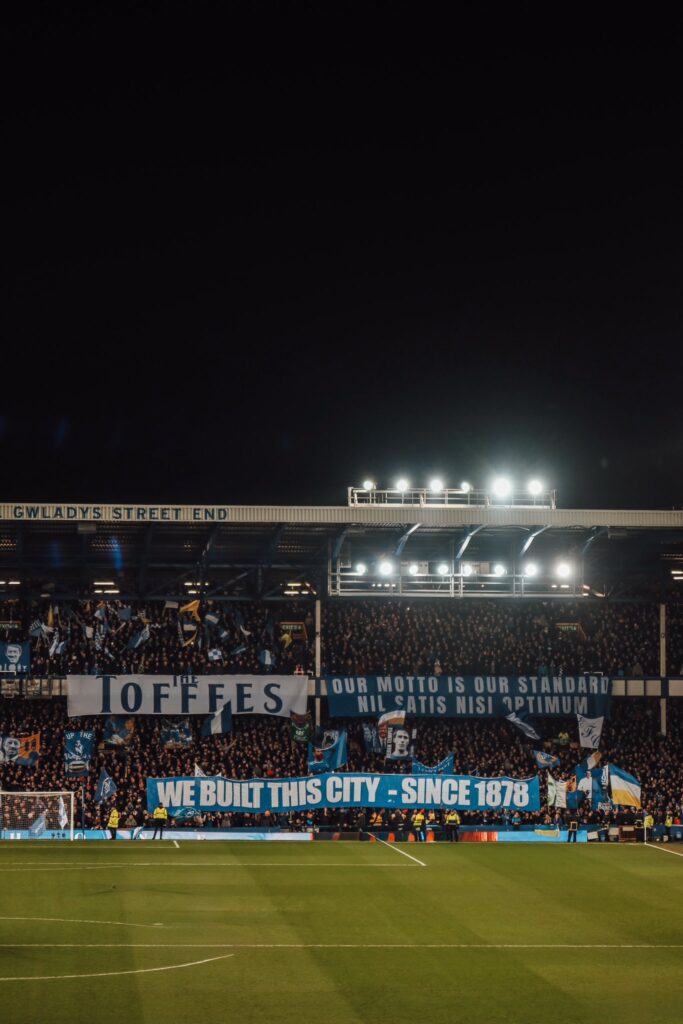In Liverpool lies Goodison Park, a ground built by the fans. Carpenters, roofers and painters all gave their labour for free to build the home of Everton Football Club in 1892. Archibald Leitch created it, with embroidery of a cross-bead design which is an actual trademark. However, the club is stepping into a new era, with the torch being passed to a new visionary: architect Dan Meis. He has been entrusted to build a new stadium which maintains Everton’s rich history but with a strong emphasis on its future.

Meis is an architect renowned for creating iconic stadiums including AS Roma’s new stadium, which reflects Rome’s legendary Colosseum, and the Staples Centre, home to multiple sports teams including the LA Kings and LA Lakers. Meis describes the ground at Bramley-Moore Dock – which will be named the Hill Dickinson Stadium for sponsorship reasons – as one of the most “impactful projects” he has created in his career due to his commitment of incorporating voices of the Everton community into the design.
After the AS Roma project, Meis wondered what was next for him. “I was very sceptical initially that I was Los Angeles-based at the time, and it seemed a long stretch that a club like Everton, which is very historical, were going to look internationally for an architect.”
He gathered a small team of “about 5 or 6” and rented an Airbnb in London, where they created sketches and models for initial meetings, even before they were officially selected, to show their way of thinking.
Understanding the club’s history was key for Meis. “In my case, it starts with very deep research. It’s not about an architectural idea. It’s not even about a stadium. It’s about the culture of a club or a place, and that’s what I did. I spent a lot of time in Liverpool and ordered a bunch of old books on Everton and Liverpool and Archibald Leitch, so it really became a research project.”
He found inspiration in the stadium’s location, ‘on the banks of the Royal Blue Mersey.’ The area reflects the city’s maritime heritage, with Victorian warehouses now transformed into vibrant cultural spaces that embody Liverpool’s resilient spirit. “One of the early sketches was a scribble of a brick warehouse building with a wave coming over the top of it. We were almost excavating something more like an archaeological thing, that there is a stadium within the docks.”
Bill Kenwright, Everton’s chairman at the time, wanted a contemporary design to avoid an old-fashioned feel. The curved metal roof symbolises the nearby river, blending historical references to the docks with a dynamic, forward-looking element.
But creating a home for future generations of a football club isn’t just about aesthetics – it’s about collaboration. Meis had to ensure through multiple steps of surveys and consultations with fans that the product would resonate with Evertonians.
One thing that became apparent to Meis was how important social media became to the process. “The club were very open to the interaction with fans which they very easily could have shut that down, but they recognised that it’s the people’s club.
“I would get dozens of tweets every day about suggestions and things to incorporate, how many seats and what are the most important elements, so it did influence the process a lot. It felt like I had 70,000 consultants every day”.
Barry Cass, a devoted fan and podcaster for the fan channel ‘Toffee TV’, appreciates how much Meis and his team have listened to and reflected the fans’ needs within the design. “It’s great to see input from fans taken seriously. It’s a reflection of our aspirations, history and needs and will genuinely be a new home to us.”
Executives at the club were adamant about ensuring that their new stadium would stand apart from those of Arsenal or Tottenham. They emphasised that Everton is a unique club that truly belongs to its fans. “One thing that stuck with me from my very first game at Goodison Park was how many families you see, which is something that’s rare. It’s an unusual club.”
As a lifelong football fan, Meis understands the impact that supporters have on the game.

“If you look at several of the new UK stadiums, starting with the Emirates and the Olympic Stadium, the dimensions from the edge of the pitch to the stands were far. I think that people will feel that it has a more traditional English football feel with the ability for fans to be right on the sidelines. The more you can do that, the more it turns into a true home pitch advantage.”
The South Stand is one of the steepest stands in Europe, aiming to create an intense atmosphere, which not only maximises the visibility of the game but also creates an intimate setting which embodies the spirit of the game.
“I think the thing that will resonate most with people will be the size of it. You compare it to how you remember Goodison, it’s massive.”
Economic restraints, including point deductions and the pandemic’s crippling effects on matchday revenue, posed significant hurdles for Meis and his team. Everton’s financial situation meant transfers and squad development stagnated, creating uncertainty in the Premier League. Additionally, the war in Ukraine impacted the club’s sponsorships, further deepening the financial turmoil. The club entered a precarious situation involving Financial Fair Play which led to them having an 8-point deduction in the 23/24 season. The threat of relegation loomed over Everton, including the stadium project.
“Particularly early in the process there was some significant concern that we would have to redesign the scheme to make it affordable”, Meis said.
“It looked like the whole scheme might turn upside down and there was always a concern that if the club is struggling on the pitch, are they going to have the support to get everything done?”
The club needed to react with resilience and stay dedicated to the project. With moves in the boardroom and on the pitch, after back-to-back seasons fighting relegation, key players involved managed to make the stadium the priority. Now, with a returning manager in David Moyes as well as new owners, the club finally seems to be in a steady place.
Fans were concerned that a 52,000 capacity for the stadium might limit the club’s potential revenue.
“People tend to forget that another 10,000 seats are the most expensive ones to build because they’re at the back of the stadium. They’re not the best seats so they don’t drive the best revenue. It’s not just the construction of them but you would also have to build wider concourses and wider stairways. Everything is a cost consideration.”
Meis faced personal challenges when the project shifted from design to construction. He worried the contractor would limit his creativity and drastically change the stadium. However, the chairmen supported him to maintain a role throughout the process.
Barry’s consensus towards Meis couldn’t be filled with more gratitude. “I think Dan and his team deserve immense thanks. Their commitment to listening to fans and respecting their wishes shows how important he knew this project was to us.”
From Everton’s recent financial instability, the new ground is a symbol of rebirth and resilience for their future. With each brick laid, Meis is constructing not just a landmark, but a future home for generations to come.
“It’s not just for the most VIP customer, it’s an everyman’s club experience. It’s place where people can go and have communal experiences that they don’t have to buy a special seat to be a part of. It really helps build the next generation of supporters”.
Meis recognises the benefits the stadium should reward the club off the pitch too. From the very first day, revenue should be driven significantly more than Goodison Park could ever do due to the limitations of the building.
“That’s key for us. This stadium isn’t just about short-term success, it’s about ensuring the club can thrive for years to come,” Barry added.
But Meis also acknowledges that money doesn’t equate to wins. “You can spend a bunch of money on great players and a great stadium, and you can still somehow not figure out the formula for getting goals.
“However, what I’m confident about is that we’ve gone through some challenging years and now we have a new ownership that’s very ambitious with a new building that’s going to be driving revenues. We will have more fans in a much more aggressive posture that I think will give us an edge.”
As Dan Meis walks through the newly built stadium, it’s apparent the emotion and attention to detail he brought to the project, not only to honour Everton’s past but to shape their destiny.
“It’s been an incredible partnership, and I’ve loved becoming an Everton fan. I have two tattoos. I have one from Roma and one from Everton. At some point I’ll run out of room, I guess. It’s how I work, that I go from working from special project to special project. It tends to be that I always have to have a particular club or place and really devote my creative energy to that”.



